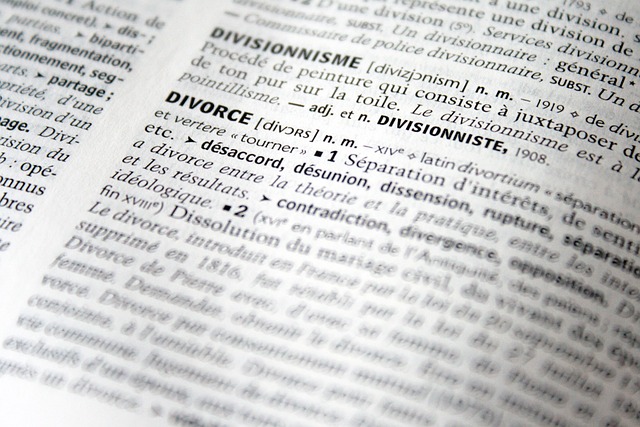Conducting thorough investigations is crucial to addressing misconduct in healthcare organizations, focusing on white-collar crimes and balancing evidence collection with client rights protection. Expertise in navigating complex corporate structures and healthcare regulations ensures justice and integrity. Understanding the intricate healthcare regulatory process involves interpreting laws related to medical practices, patient data privacy, and drug distribution, while proactive measures like compliance programs and training can avoid indictment. Effective evidence collection through strategic reviews of electronic records and communications leads to favorable outcomes in defense cases.
In recent years, C-level investigations have gained significant attention as organizations strive for transparency and accountability. This article delves into the intricate process of uncovering misconduct through initial probes, highlighting the critical role of understanding healthcare regulatory litigation. We explore the legal framework governing this sector, offering insights into effective evidence collection methods. Furthermore, we discuss resolution strategies aimed at prevention and mitigation, providing a comprehensive guide to navigating the complex landscape of understanding healthcare regulatory litigation processes.
- Uncovering Misconduct: The Initial Investigation
- Legal Framework: Navigating Healthcare Regulations
- Evidence Collection: A Comprehensive Approach
- Resolution Strategies: Avoidance & Mitigation Tactics
Uncovering Misconduct: The Initial Investigation

When a potential misconduct is suspected within a healthcare organization, a thorough initial investigation is crucial to understand the scope and nature of the issue. This initial step in the healthcare regulatory litigation process involves a meticulous review of facts, evidence, and policies. It aims to uncover any violations of laws, regulations, or ethical standards that may have occurred, particularly focusing on potential white-collar crimes like fraud or embezzlement.
The investigation is a delicate balance between gathering concrete evidence and protecting the rights of respective business and individual clients involved. Skilled investigators employ various tools, from reviewing financial records to conducting interviews with key personnel, to piece together a comprehensive picture. This process demands expertise in navigating complex corporate structures and understanding the unique challenges posed by healthcare regulatory environments, ensuring that justice is served while upholding the integrity of all parties concerned.
Legal Framework: Navigating Healthcare Regulations
In the intricate landscape of healthcare regulations, understanding the legal framework is paramount when conducting investigations at the C-level. The industry’s unique challenges demand a nuanced approach to general criminal defense strategies, as regulatory litigation processes can be complex and far-reaching. Navigating these waters requires expertise in interpreting laws that govern medical practices, patient data privacy, and drug distribution, among other critical aspects. An unprecedented track record of successful investigations is built upon this deep understanding of the healthcare legal ecosystem.
When launching investigations into potential misconduct or violations within healthcare organizations, professionals must adhere to stringent guidelines. This includes safeguarding patient rights, ensuring transparency, and maintaining the integrity of medical records. By staying abreast of evolving regulations and adapting practices accordingly, defense teams can effectively protect their clients while upholding the highest standards of ethical conduct.
Evidence Collection: A Comprehensive Approach

In the context of healthcare regulatory litigation, evidence collection is a meticulous and crucial process that demands a comprehensive approach. It involves navigating complex legal frameworks and understanding the intricate details of the industry to ensure every relevant fact is uncovered and properly documented. This includes meticulously reviewing electronic health records, financial transactions, and internal communications to gather evidence that supports or refutes allegations.
For his clients facing white-collar defense cases, this methodical strategy has proven instrumental in building robust defenses. The team employs advanced technologies and expert analysts to sift through vast datasets, ensuring no stone is left unturned. Their unprecedented track record testifies to the effectiveness of their evidence collection methods in achieving favorable outcomes, demonstrating a deep understanding of the healthcare regulatory litigation process.
Resolution Strategies: Avoidance & Mitigation Tactics

When facing potential C-Level investigations, understanding the healthcare regulatory litigation process is key to devising effective resolution strategies. One approach involves avoiding indictment through proactive measures and risk mitigation tactics. This may include stringent compliance programs, regular audits, and training sessions for employees to ensure adherence to regulatory norms. By implementing these measures, organizations can significantly reduce the likelihood of legal repercussions.
Additionally, focusing on white-collar defense strategies is crucial for protecting both corporate and individual clients. This involves gathering compelling evidence, conducting thorough internal investigations, and developing robust legal defenses that challenge the validity of allegations. Such tactical navigation through the complex healthcare regulatory landscape can lead to favorable outcomes, including settlement agreements or dismissed charges, thereby mitigating potential reputational and financial damage.
The launch of C-Level investigations in healthcare requires a deep understanding of the regulatory landscape and a strategic approach. By combining comprehensive evidence collection, effective navigation of legal frameworks, and proactive resolution strategies, organizations can mitigate risks and ensure compliance with healthcare regulations. This structured process, as discussed in this article, including key aspects like uncovering misconduct, navigating legalities, and employing avoidance tactics, equips leaders to address challenges head-on and foster a culture of integrity within their institutions. Embracing these practices is essential for understanding the healthcare regulatory litigation process and maintaining public trust.






